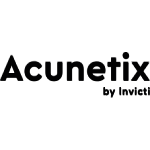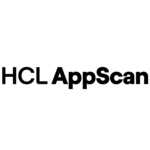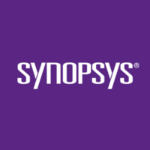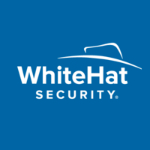List of Best Dynamic Application Security Testing Software
Showing 10 of 29 productsInsightVM, the ultimate network vulnerability management solution. Seamlessly scan, prioritize, and remediate risks, all while gaining unparalleled visibility into your entire IT environment. With user-friendly features capabilities, InsightVM is the...Read InsightVM Reviews
Veracode is a leading software security company that provides reliable and innovative solutions to protect your applications and data from cyber threats. With its advanced technology and expertise, Veracode empowers businesses to confidently safeguar...Read Veracode Reviews
Acunetix is a web vulnerability scanning software that helps businesses and organizations protect their online assets from security threats. With advanced features and automated scanning capabilities, Acunetix ensures the security of websites and web...Read Acunetix Reviews
HCL AppScan is a software that helps businesses identify and fix vulnerabilities in their web and mobile applications. With its advanced scanning and testing capabilities, it allows organizations to secure their digital assets and protect against cyb...Read HCL AppScan Reviews
PortSwigger Burp is a and versatile web security testing tool that has become an essential tool for cybersecurity professionals and developers alike. It offers a wealth of features and capabilities, allowing users to efficiently analyze and identify...Read PortSwigger Burp Reviews
Invicti is a software that empowers businesses to achieve their security goals with ease. With its robust features interface, Invicti is changing the game for companies of all sizes. This dynamic tool is designed to enhance cyber defenses and stay on...Read Invicti Reviews
Appknox is a top-notch mobile security product designed to protect your apps from potential threats. We understand the importance of creating a secure digital environment, which is why our team has developed a unique solution that goes beyond traditi...Read Appknox Reviews
Kondukto is more than just a software its a game changer. With its intuitive user interface and powerful features, Kondukto streamlines processes, improves productivity and boosts collaboration. Say goodbye to inefficiency and hello to a new level of...Read Kondukto Reviews
Synopsys is a leading software company that specializes in electronic design automation and semiconductor intellectual property. With a global presence and a strong track record of innovations in the industry, Synopsys is a trusted provider of advanc...Read Synopsys Reviews
WhiteHat Sentinel Dynamic is a security solution designed to protect your business from cyber threats. With its advanced technology and continuous monitoring, Sentinel Dynamic provides real-time visibility into your web applications to detect any vul...Read WhiteHat Sentinel Dynamic Reviews
- What Is Dynamic Application Security Testing Software?
- Top Reasons Why Businesses Need Dynamic Application Security Testing Software?
- What Are the Top Key Features of Dynamic Application Security Testing Software?
- What Are the Top Benefits of Dynamic Application Security Testing Software?
- What Are the Steps to Choose the Right Dynamic Application Security Testing Software?
- What Are the Types of Dynamic Application Security Testing Software for Different Industries?
- What Are the Technology Trends for Best Dynamic Application Security Testing Software?
- What Are the Deployment Options for Dynamic Application Security Testing Software?
What Is Dynamic Application Security Testing Software?
Dynamic Application Security Testing (DAST) software is a form of software testing that examines the runtime behavior of an application. The objective is to discover any deficiencies or possible points of susceptibility. The DAST methodology is classified as a form of black box testing, which implies that it is executed without any prior knowledge of the internal mechanisms of the application being tested.
It effectively emulates an external attack scenario. Instead of solely seeking out any weaknesses in the code, Dynamic Application Security Testing (DAST) evaluates the application's behavior in authentic real-world situations. This aids in the identification of vulnerable regions, such as cross-site scripting, which may not be easily discernible through a thorough examination of the code.
The dynamic application security testing tools technique is a highly efficient method for identifying and mitigating potential security risks within an application prior to its deployment. Additionally, it can function as an ongoing security assessment, notifying the development team in the event of an application breach or the discovery of a novel vulnerability.
Top Reasons Why Businesses Need Dynamic Application Security Testing Software?
1. The identification of vulnerabilities, including but not limited to SQL Injection, Cross-Site Scripting, Buffer Overflow, and Insecure Cryptographic Storage.
2. The timely identification of potential risks and malevolent behavior within the application.
3. The automated generation and integration of notifications regarding security breaches.
4. The implementation of security measures in accordance with established standards, such as OWASP, PCI DSS, SANS Top 20, HIPAA, and GDPR, is crucial for maintaining compliance.
5. Ensuring the security of sensitive data to prevent unauthorized access or compromise.
6. The identification of vulnerabilities at various stages of the development lifecycle pertaining to application-level issues.
7. The system's audit capability can be improved by the provision of comprehensive security scan reports.
8. One potential solution involves the implementation of an automated system that effectively detects and prevents fraudulent requests from causing any detrimental effects.
9. Conducting tests and implementing monitoring mechanisms to detect any unaddressed software defects and prevalent security weaknesses.
10. Identifying deliberate security vulnerabilities intentionally inserted by software makers or malicious actors.
11. Enables DevOps teams to enhance the robustness and security of applications.
12. The system notifies developers in the event of the emergence of novel risks or vulnerabilities inside the market.
13. Increases efficiency by minimizing the need for expensive and time-intensive code review procedures.
14. The ability to swiftly identify emerging application layers and adapt to their evolving settings.
15. Enhancing the efficiency of the incident response process through the implementation of automated response alternatives.
What Are the Top Key Features of Dynamic Application Security Testing Software?
The top key features of dynamic application security testing software include:
1. Vulnerability Scanning: DAST scanning tools facilitate the scanning of apps to identify and assess any existing vulnerabilities that are already known. The system conducts evaluations to identify instances of wrong configuration, misconfigured parameters, and several other types of security vulnerabilities.
2. Automated Testing: This functionality facilitates the execution of automated tests on applications while they are running. The use of this tool facilitates the precise detection of a diverse array of security vulnerabilities, including business logic faults, authentication vulnerabilities, access control vulnerabilities, and injection attacks.
3. Runtime Application Protection: The primary emphasis of this feature is the provision of real-time safeguarding for apps. The system actively monitors the application during its operational duration and effectively prevents the occurrence of any potentially harmful or questionable activity.
4. Application Stack Tracing: Dynamic application security testing tools facilitate the monitoring of applications' behavior and operations, hence aiding in the identification of areas of vulnerability or potential security vulnerabilities.
5. Remediation Guidance: This functionality offers suggestions and comprehensive instructions on how to effectively resolve the detected security concerns.
6. Compliance Checks: This functionality facilitates the automated monitoring of regulatory obligations and aids enterprises in upholding a secure and compliant operational setting.
7. Logging and Reporting: This functionality offers comprehensive logging and reporting capabilities for security events and vulnerabilities.
The utilization of this approach facilitates the monitoring of security initiatives, effectively identifying anomalies, and enhancing the overall security stance of applications.
What Are the Top Benefits of Dynamic Application Security Testing Software?
1. Increased Threat Detection: Dynamic application security testing (DAST) software offers an extensive threat detection mechanism that aids in the identification of both known and new vulnerabilities.
2. Automated Scanning: The DAST program facilitates the automation of application security risk testing, thereby enhancing precision and expediting the identification of potential vulnerabilities.
3. Real-Time Monitoring: The DAST program possesses the capability to actively monitor apps in real-time, thereby promptly notifying the user of any newly identified dangers.
4. Improved Security: The utilization of DAST software facilitates the prompt identification and remediation of vulnerabilities, hence enhancing the security of applications.
5. Cost Reduction: The utilization of DAST software has the potential to mitigate the need for manual testing, hence resulting in a reduction in associated testing expenditures.
6. Reduction in False Positives: The DAST program is effective in mitigating the occurrence of false positives by virtue of its extensive and adaptable scanning capabilities.
7. Enhanced Conformity: The utilization of Dynamic Application Security Testing (DAST) software enables institutions and businesses to adhere to security-related laws and legislation more effectively.
8. Detailed Reports: The DAST software offers comprehensive reports that aid firms in comprehending the potential dangers associated with their applications.
What Are the Steps to Choose the Right Dynamic Application Security Testing Software?
1. This study aims to assess and analyze the distinctive characteristics and functionalities of several dynamic application security testing software alternatives. It is important to take into account several factors when considering software characteristics, including the testing language, scalability, automation, customization, reporting capabilities, cost, and adaptability.
2. Conduct a comparative analysis of the financial implications associated with each available option for application security testing software. It is important to take into account the financial implications associated with each application, including any supplementary features or services that may incur additional costs, if relevant.
3. Evaluate consumer comments and reviews. Analyze customer reviews or feedback provided by individuals who have utilized the application security testing software. Dynamic analysis security testing tools offer a valuable means of gathering insights into the user experience and evaluating the advantages and disadvantages associated with each available option.
4. Evaluate the security features of the program, a comprehensive assessment needs to be conducted. Please verify the adherence of the software to secure coding principles, encryption standards, authentication systems, and other security measures.
5. Assess the efficacy of the program. Ensure that the application security testing software possesses the capability to promptly and precisely identify both present and potential security vulnerabilities.
6. Evaluate the level of work necessary for implementation and maintenance. Assess the anticipated duration for the implementation and ongoing maintenance of the application security testing software to ascertain its suitability for your needs.
7. Evaluate the vendor's customer assistance. Assess the type of customer support provided by the vendor and the timeliness of their responses. Ensuring the appropriate functioning of the software in your environment will be crucial.
8. Precede software implementation with testing. Prior to making a commitment, it is advisable to conduct a comprehensive evaluation of several dynamic application security testing software alternatives and assess their respective performance. The examination ought to encompass a comprehensive security audit of the system in order to ascertain its alignment with your requirements.
What Are the Types of Dynamic Application Security Testing Software for Different Industries?
Dynamic Application Security Testing (DAST) software plays a crucial role in the identification of vulnerabilities in web applications and APIs. This is achieved by active scanning during runtime. DAST tools are widely employed in many industries to augment the security of their applications.
Below are some categories of Dynamic Application Security Testing (DAST) software that are well-suited for various industries:
General-Purpose DAST Tools:
- Burp Suite: Burp Suite, a software widely employed within the cybersecurity sector, provides a diverse array of tools specifically designed for the purpose of conducting web application security testing.
- Netsparker: Netsparker is a web application scanning tool that is applicable across several sectors. It is designed to identify vulnerabilities in online applications, such as SQL injection and cross-site scripting (XSS).
Financial Services:
- Qualys Web Application Scanning: Designed specifically for financial organizations, this software aids in the identification of vulnerabilities while ensuring compliance with industry requirements.
- Veracode: This solution provides a comprehensive and effective approach to addressing the needs of the finance sector, specifically in terms of assuring adherence to financial security regulations.
Healthcare:
- AppSpider: Dynamic analysis security testing tools solution is designed to be applicable within the healthcare sector, as it does comprehensive scans of online applications and APIs to identify potential vulnerabilities.
- WhiteHat Sentinel: We offer security testing services that are specifically tailored for healthcare applications.
E-commerce:
- Acunetix: The utilization of vulnerability identification techniques is highly effective in enhancing the security of e-commerce websites, specifically in mitigating potential threats that may compromise the integrity of online transactions.
- Trustwave App Scanner: The DAST tool is specifically designed for e-commerce platforms, with the primary objective of safeguarding the security of online shopping websites.
Government and Public Sector:
- OWASP ZAP: A publicly accessible dynamic application security testing (DAST) tool that is employed by governmental entities to assess the security vulnerabilities present in online applications.
- IBM Application Security on Cloud: This solution is specifically tailored to address the distinct security needs of public sector enterprises.
Software Development:
- Snyk: The primary emphasis lies in the identification and remediation of vulnerabilities inside open-source libraries and dependencies, a critical aspect of software development.
- GitLab Secure: Embedded into the software development pipeline, this tool facilitates the early detection and resolution of difficulties during the development process.
Automotive and IoT:
- IOActive IoT Security: This particular solution is purposefully developed for the purpose of evaluating the security measures implemented in connected devices and apps within the Internet of Things (IoT) ecosystem.
- Karamba Security: The individual possesses expertise in the field of ensuring the security of automotive software and embedded systems.
Energy and Utilities:
- Synopsys Software Integrity Platform: Designed specifically for the energy industry, this software offers a thorough examination of security measures for essential infrastructure applications.
Retail:
- Rapid7 AppSpider:
Gaming Industry:
- Checkmarx:
What Are the Technology Trends for Best Dynamic Application Security Testing Software?
1. Automated Dynamic Application Security Testing: Automated Dynamic Application Security Testing (DAST) is now gaining significant traction as a prominent phenomenon within the realm of application security. Automated Dynamic Application Security Testing (DAST) solutions empower organizations to efficiently and precisely identify and remediate security vulnerabilities present in their web applications.
2. Cloud-based Application Security Solutions: Numerous organizations are currently implementing cloud-based application security solutions as a means to enhance their security stance and enhance their ability to identify and manage risks throughout the entirety of the enterprise. Cloud-based solutions offer sophisticated analytics, real-time data insights, and expedited deployment of security measures.
3. DevSecOps: DevSecOps is a recognized methodology that aims to seamlessly incorporate security practices into the DevOps process, with the ultimate goal of developing software systems that possess robust security measures. The DevSecOps methodology encompasses a set of recommended procedures for the automation of testing processes, which include dynamic application security testing (DAST) and static application security testing (SAST).
Additionally, it incorporates the use of security oracles to verify the security of applications.
4. Security Orchestration, Automation, and Response (SOAR): The implementation of a Security Orchestration, Automation, and Response (SOAR) platform empowers enterprises to promptly and effectively address security risks. The SOAR platform gathers and establishes connections between data obtained from various detection systems, afterward employing machine learning techniques to assign priority to warnings.
Additionally, it streamlines workflows in order to enhance response time and effectiveness in addressing possible threats.
5. AI-Powered Solutions: AI-driven application security solutions empower enterprises to swiftly and precisely identify and mitigate risks, surpassing the capabilities of human personnel.Artificial intelligence (AI)-based systems provide the capability to detect and identify malevolent code, promptly notify security teams of prospective assaults, and effectively prevent the execution of malicious attacks.
What Are the Deployment Options for Dynamic Application Security Testing Software?
The available deployment choices for dynamic application security testing software are contingent upon the specific program being utilized. Nonetheless, there are often four main possibilities that can be identified. One such choice is a deployment that is limited to the local environment. The installation of the dast sast tools necessitates its installation on either a personal computer or a server.
The program is afterward configured to perform scans on apps during their development and deployment stages. The alternative choice entails a cloud deployment. The aforementioned approach involves the utilization of a third-party cloud service for the purpose of scanning apps and identifying potential vulnerabilities. The option is considered to be the least intrusive as it does not necessitate any installation or configuration processes.
The third alternative entails a mixed deployment. This approach utilizes both on-premises and cloud-based installations. One possible scenario involves the local installation conducting routine scans, while the cloud service is utilized to identify vulnerabilities on the initial launch of an application. The fourth alternative entails an on-premises implementation.
The installation and configuration of dynamic application security testing tools on the organization's server are necessary. This method may be deemed the most secure due to the organization's complete control over the program. Nevertheless, the process of configuring and maintaining it necessitates a substantial investment of both time and resources.










